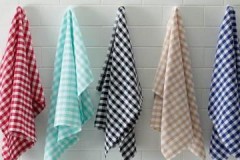Effective and cheap, or how to wash a tea towel with vegetable oil
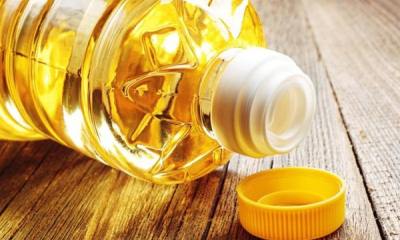 Every hostess knows firsthand how difficult wash kitchen towels from ingrained food traces.
Every hostess knows firsthand how difficult wash kitchen towels from ingrained food traces.
Conventional means do not always cope with them. Then you have to resort to proven folk methods, which turn out to be much more effective.
In particular, this applies to bleaching laundry with vegetable oil. Paradoxical as it may seem, the towels acquire their pristine cleanliness and freshness.
Let's take a closer look at how to wash a kitchen towel with vegetable oil.
Content
What do you need to know before washing?
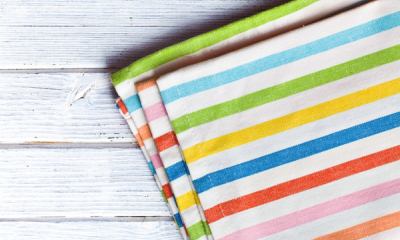 So that washing does not take much time and effort, it is recommended not to use in the kitchen terry towels... Due to the long drying time, they quickly start smell bad.
So that washing does not take much time and effort, it is recommended not to use in the kitchen terry towels... Due to the long drying time, they quickly start smell bad.
It is preferable to choose cotton, bamboo or linen fabrics and napkins... Better if they are waffle, because they absorb moisture well and dry quickly.
Kitchen towels will not stain as much if they are ironed with a hot iron after washing and drying.
Washing towels with vegetable oil suitable for all cotton fabrics. And after 2-3 soaks, even faded fabrics acquire their former brightness. But it makes no sense to wash synthetics in a homemade herbal mixture - the desired result will not be achieved.
Linen is immersed in any of the proposed solutions for 5-6 hours:
- in warm water (5-6 liters) add 5 tbsp. l. washing powder and baking soda;
- in the same amount of water dissolve the same amount of tablespoons of salt.
Soaking with Domestos bleach is suitable for white linen. Subsequent washing with vegetable oil produces an appropriate chemical reaction that breaks down the protein base of stubborn stains. In addition, the oil also whitens the laundry.
To remove dirt from textiles, you must choose exclusively filtered oil (preferably sunflower oil) Is a refined or deodorized product.
Recipes
For a long time, people have discovered that vegetable oil is highly effective in washing heavily soiled laundry.Therefore, to date, many recipes have accumulated that housewives use to this day.
Sunflower oil and bleach
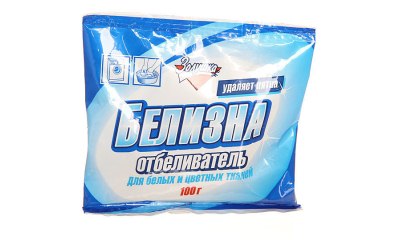 This recipe is perfect for washing yellowed towels and bed linen.
This recipe is perfect for washing yellowed towels and bed linen.
The following ingredients are required:
- 100 g of any washing powder;
- 80 g dry bleach (for example, "Ace");
- 100 ml of refined sunflower oil;
- 100 ml table vinegar (9%).
All this is diluted in boiling water and dirty towels are immersed. The next day, they wash in a washing machine at the usual mode.
How to bleach white towels with vegetable oil and bleach, the video will tell you:
We use laundry soap
Laundry soap is an indispensable cleaning agent in everyday life. And in the fight against stubborn dirt on kitchen towels, it is used no less actively.
For this recipe you will need:
- water - 10 liters;
- enameled container;
- 90 ml of sunflower oil;
- 100 g of liquid or dry bleach;
- ½ brick of laundry soap.
Operating principle:
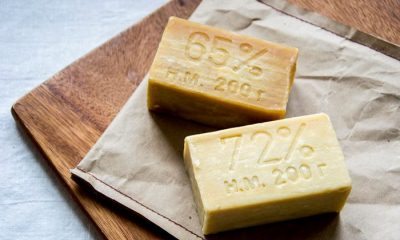 The water is brought to a boil.
The water is brought to a boil.- The rest of the ingredients are added. Only the soap is pre-rubbed with shavings on a grater.
- Mix thoroughly until all particles are completely dissolved.
- The laundry is placed in the solution and boiled for about 15 minutes (longer if it is heavily soiled).
- Turn off the stove and do not remove the towels until the soap-oil solution has completely cooled.
Then the laundry is washed in the usual way. To ensure you get perfectly clean towels, it is recommended to soak them in a herbal soap overnight.
With potassium permanganate
When you want to return the original whiteness to kitchen linens or napkins, you can use this tool:
- Dilute potassium permanganate in water until a slightly pinkish solution is obtained.
- Mix in some shavings of laundry soap and 1 tbsp. l. vegetable oil.
- The soiled laundry is immersed in the solution and left for at least 10 hours.
- After that, they take it out and send it to the machine to wash.
Add vinegar
This option is somewhat similar to the previous one, but it is more suitable for bleaching a large amount of dirty laundry. Also, there is no need to digest it here.
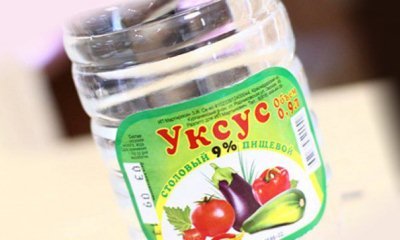 Required components:
Required components:
- hot water - 15 liters;
- 9% vinegar - 3 tbsp. l .;
- washing powder - 220 g;
- powdered bleach - 120 g;
- odorless sunflower oil - 130 ml.
The listed components are added to water and mixed. In the resulting solution, textiles are soaked overnight, and washed in the morning.
With soda
If, after removing the towels from the machine after washing, residual stains are found, then proceed as follows:
- They are soaked in an oil solution with the addition of soda and washing powder. Each component is taken in the amount of 3-4 tbsp. spoons and fall asleep in hot water.
- The laundry is kept in this solution for up to 10 hours.
- After that, it is washed again in a typewriter.
Mustard powder
This recipe comes from Japan and has been used for washing clothes since ancient times. True, it had to be slightly changed in a modern way, but the essence remained unchanged.
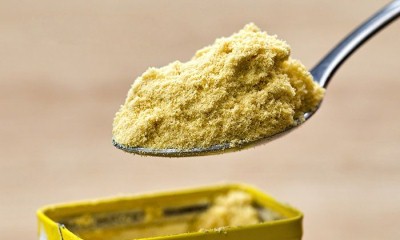 What needs to be prepared:
What needs to be prepared:
- mustard powder - 1 tbsp. l .;
- table vinegar - 40 ml;
- pure vegetable oil - 40-50 ml;
- water (heated to 60 ᵒС).
The first 3 components are diluted in water and mixed thoroughly. Then the towels are soaked for 10-12 hours. After the expiration of the prescribed period, the linen is rinsed first in warm, then cool water.
We use ammonia
Another option that copes well with stubborn dirt on kitchen textiles.
Instructions for use:
- 50 ml of ammonia is poured into a five-liter bucket filled with hot water.
- Then add 40 ml of 9% table vinegar and 80 ml of dishwashing liquid.
- Dirty napkins and towels are mixed and dipped there.
Tips and bans
As you can see, almost all recipes with vegetable oil contain bleach. When these two components come into contact, their properties are enhanced and the effect is more pronounced.
And to achieve the best result, you should adhere to certain professional tips:
-
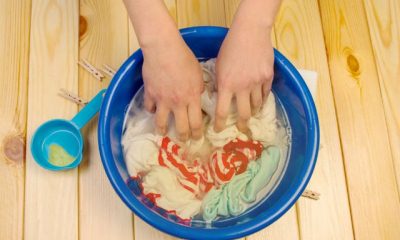 The vegetable component is poured exclusively into boiling water and only last. First, other substances are introduced according to the prescription and wait for their complete dissolution.
The vegetable component is poured exclusively into boiling water and only last. First, other substances are introduced according to the prescription and wait for their complete dissolution.Otherwise, an oily film will appear on the surface, which will prevent the particles of the powder and bleach from dissolving.
- If vinegar is used in the preparation of the solution, then replacing the bleaching agent with soda is undesirable.
These two ingredients combine to produce a violent foamy reaction. As a result, it rushes outward and floods everything around. As a last resort, you can use high tanks.
- Dry cloths are laid in the prepared soap solutions. Excessive moisture prevents the efficient breakdown of oily traces.
- For boiling and bleaching linen, it is advisable to get a large enamel bucket with a lid on the farm. This is convenient because after loading the laundry and filling with the cleaning solution, the bucket can be closed.
And so that the liquid does not cool longer, it is wrapped in a blanket. Thus, it is possible to create favorable conditions for the removal of oily stains.
Conclusion
A tandem of vegetable oil, regular laundry detergent and bleach can work wonders.
And the popularity of this method is that everything you need is always available on the farm and does not require special financial investments.


